1941 Johnson Rifle

The .30 cal M1941 Johnson Rifle is an American designed by Melvin Johnson. The Johnson Rifle was intended to serve as the US military's main battle rifle, but the .30 cal M1 Garand was chosen instead. The Johnson is a short recoil semiautomatic design utilizing a unique 10 round rotary magazine. An interesting feature of the loading system gave the rifle the capability to have additional rounds loaded while a road is chambered and the rifle is ready to fire. Another advantage of the design is that unlike the Garand, the Johnson did not eject a clip after the last round was fired. However, the Johnson's reciprocating barrel caused significant shot dispersal when firing. The rifle's performance also suffered when fired with a bayonet attached. The design of the mechanism was also complex and pieces could easily be lost when filed striping the weapon. The Johnson was rejected by the US Army, but a small number were used by the USMC in the Pacific Theater.
M1903A1 USMC Rifle

The .30 cal M1903A1 Sniper Rifle was adopted by the USMC in late 1940. The rifle is chambered for the standard .30-’06 Springfield cartridge. The rifle is regarded as very reliable and accurate. The M1903A1 is a designation given to specially hand picked or tuned National match rifles with polished bolts which were later blued for concealment. These rifles were fitted with 8X Unertl scopes. Most 1903 A1's were fitted with Type C full-pistol-grip stocks. By mid-1943, the M1903A1/Unertl sniper rifles began to see use in the Pacific Theater. One USMC document indicated that 108 M1903A1 rifles were to be issued to each division.
USMC Non-Commissioned Officer Sword
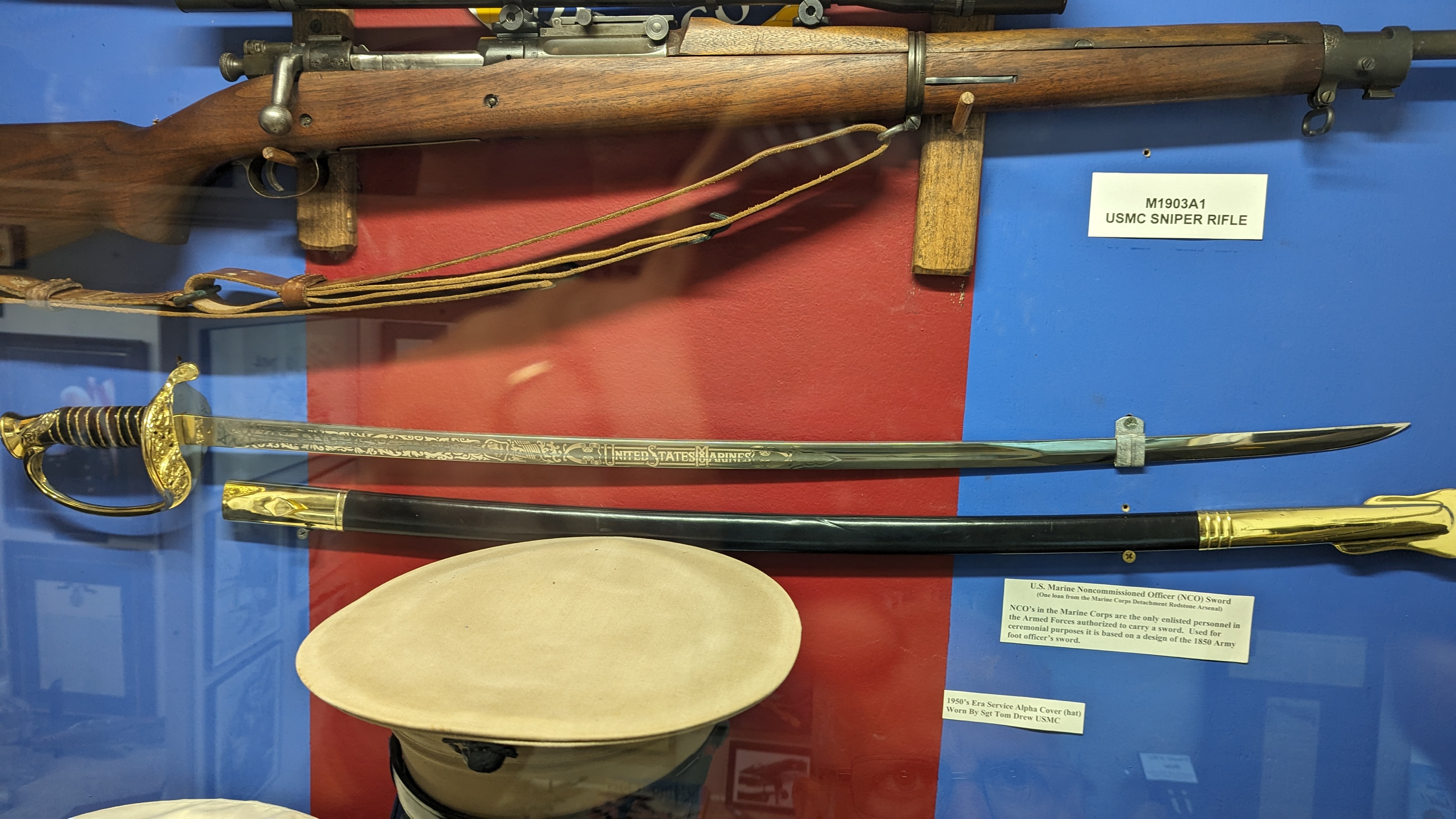
NCO's in the Marine Corps are the only enlisted personnel in the Armed Forces authorized to carry a sword. The sword was used for ceremonial purposes, it is based on a design of the 1850 Army foot officer's sword.
M1941 Fatigue Jacket
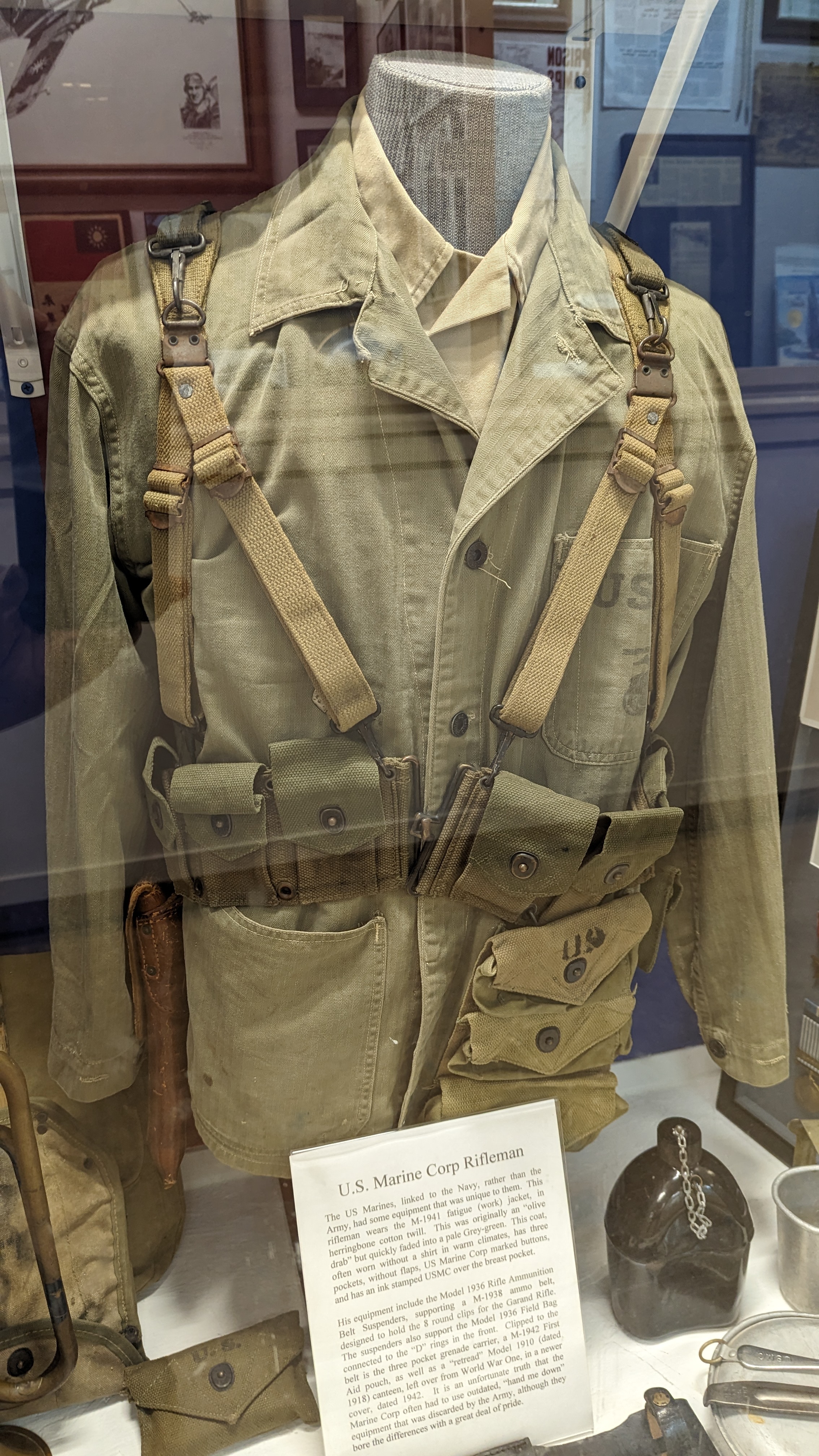
The jacket was made of heavy, sage green, herringbone twill cotton. The jacket had three flapless pockets, one on the left chest, and two on the front hips. The utility uniform had superior wearing and camouflage characteristics and was well suited for harsh conditions encountered in the Pacific Theater. This coat was often worn without a shirt in warm climates. It has three pockets without flaps.
1950's Era Service Alpha Cover (hat)
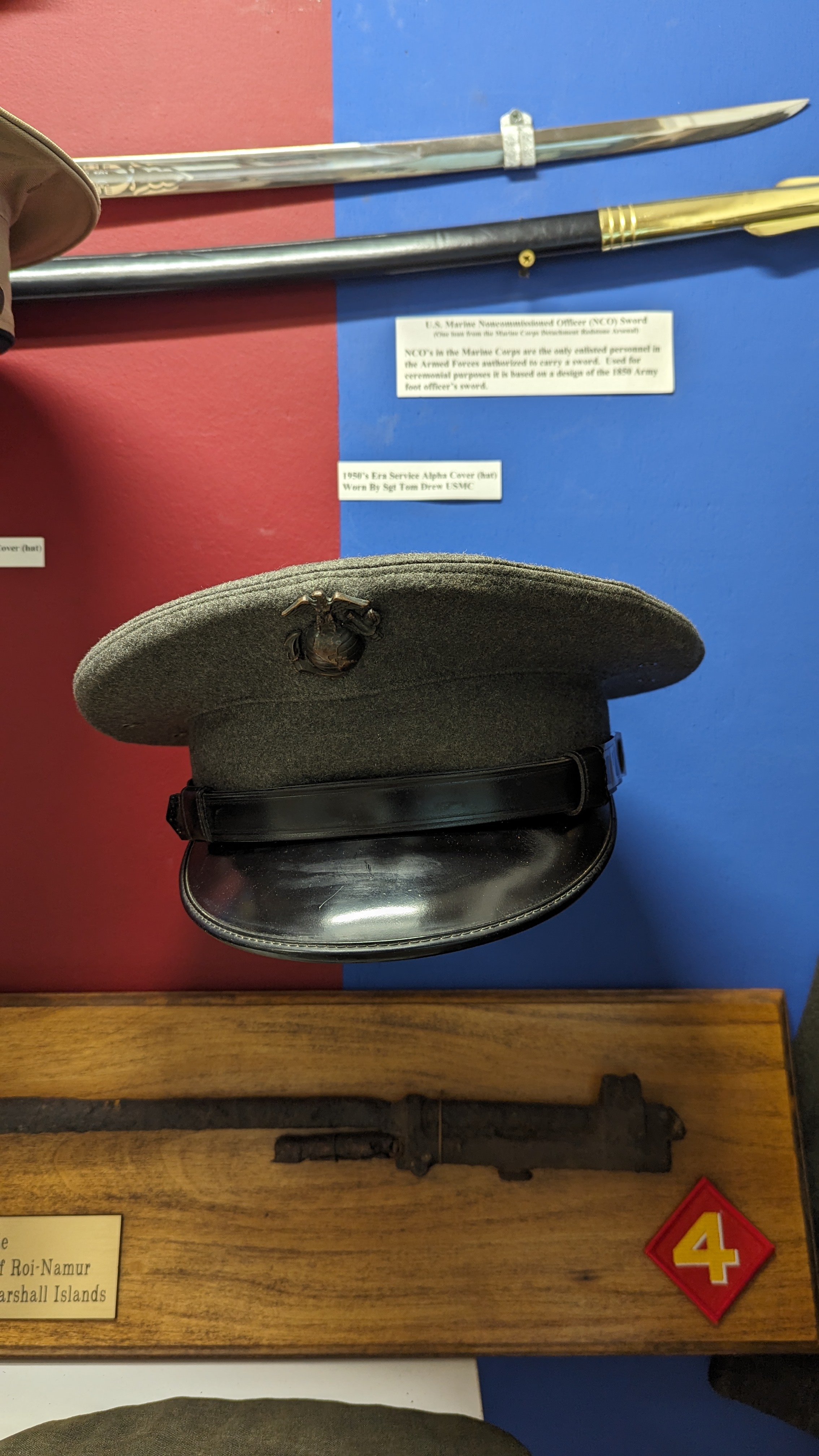 This Service Alpha Hat was worn by Sgt Tom Drew of the USMC.
This Service Alpha Hat was worn by Sgt Tom Drew of the USMC.
1950's Summer Khaki Barracks Cover (hat)
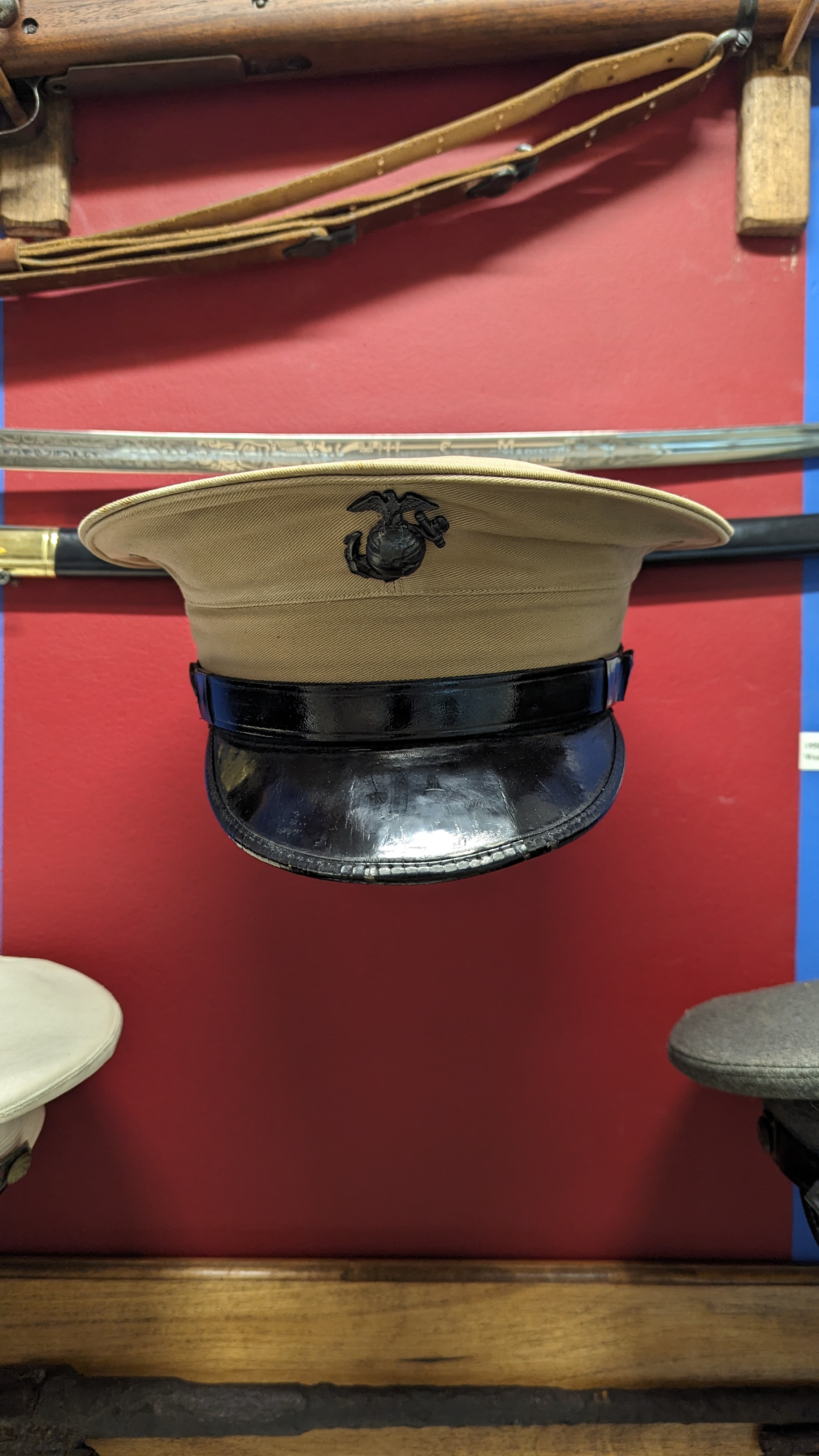
USMC Dress Blue Cover (hat)
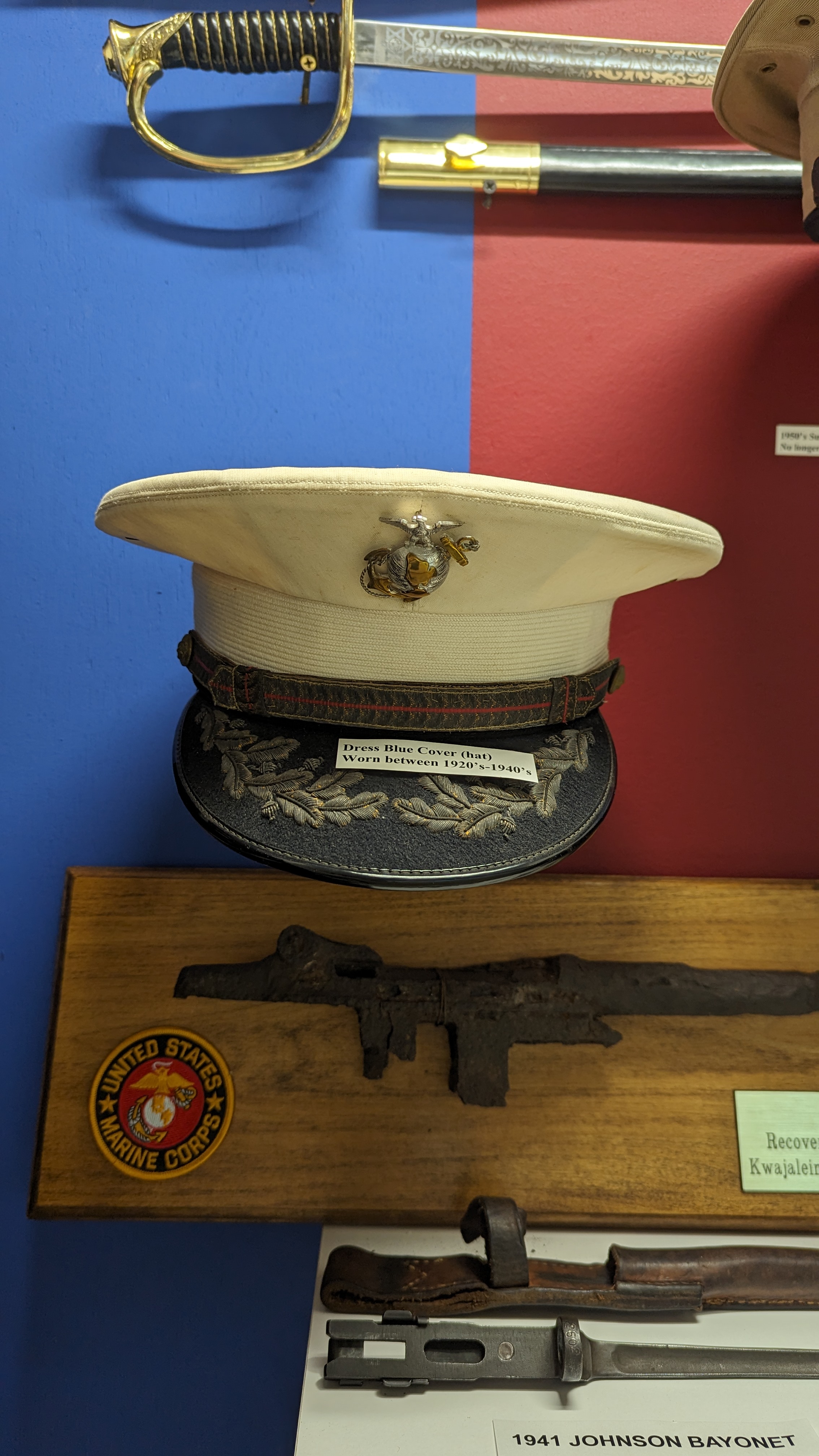
The Dress Blue Cover Hat was worn betweem 1920 - 1940.
USMC KBAR and Mess Kit

The KBAR was the first combat knife adopted by the USMC in 1942. Officially, it was designated the 1219C2 combat knife. The KBAR is a multi-purpose knife intended to be used in combat as well as general purposes such as opening ammunition crates and food rations and cutting wire. The KBAR has a very strong blade with a pinned Pommel, a steel crossguard, and a stacked leather handle.
1941 Johnson Rifle Bayonet
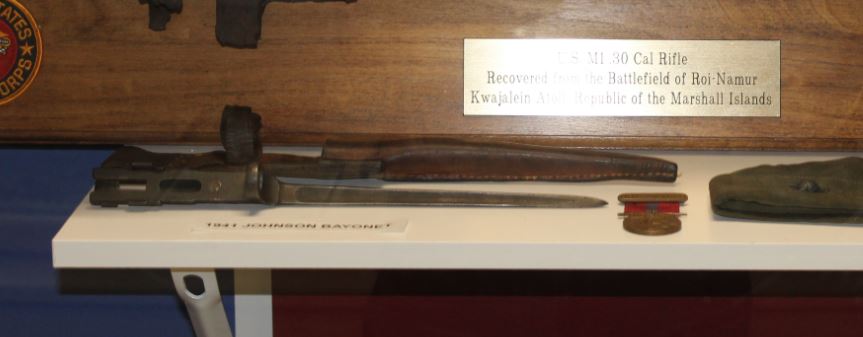
The Johnson Bayonet was made from a single billet of steel forged into shape. It has no defined handle or grip. The blade has a triangular profile, with the fuller making a concave indentation on the blade's top face. The bayonet has an overall parkerized finish to it and do not bear any makers name or identification.
.30 Cal M1 Rifle remnant
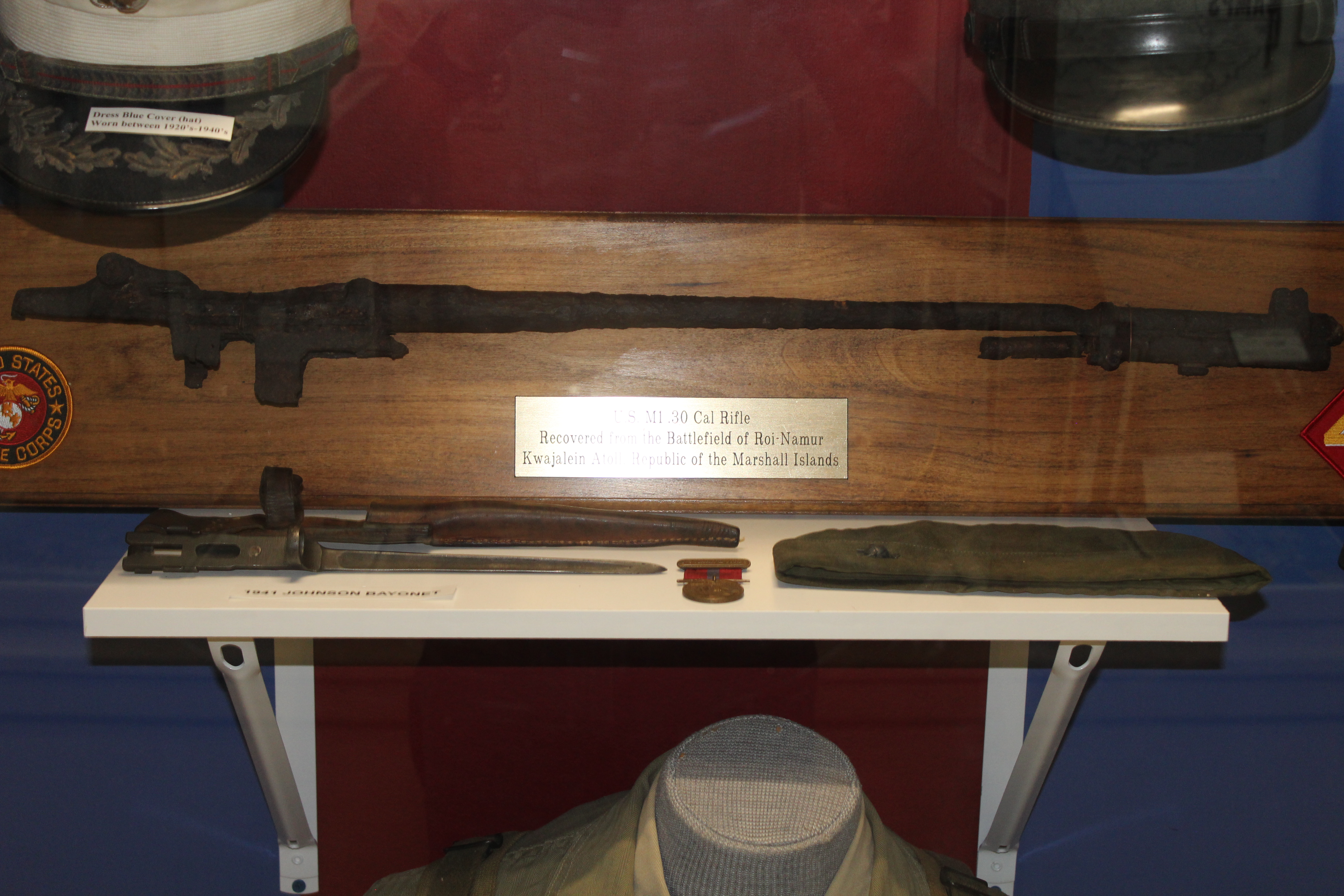
The .30 Cal M1 partial rifle historical relic was donated by Mark Hubbs, Cultural Resource Manager and Archaeologist for the US Army Space and Missile Defense Command. A native of Roi-Namur Island found the rifle remnant on the reef on the north side of the island and gave it to Mark. The rifle is believed to have been used by American Forces during operations at Kwajalein Atol and Roi-Namur Island in February, 1944 as part of Operation Flintlock. Mark donated the relic to the Veterans Memorial Museum in 2021.
1940 USMC Dress Blue Uniform
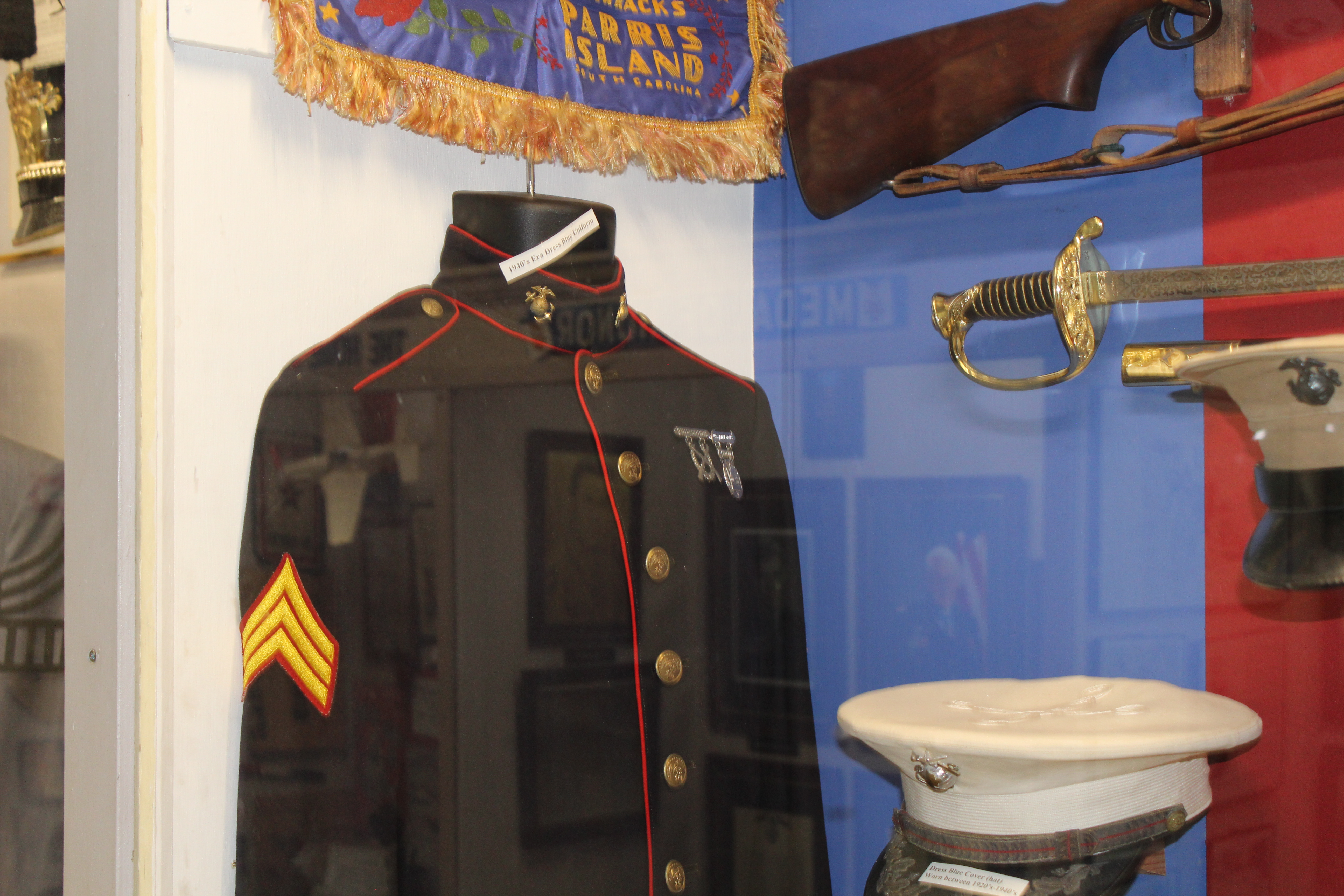
"The dress blue blouse had a standing collar. Officers' blouses had five buttons on the front fly and enlisted blouses had seven buttons. Officers' blouses had four pockets on the front and those for enlisted Marines had no pockets. Enlisted blouses had scarlet piping on the collar, front fly, epaulets and French cuffs. Officers' blouses were without these acoutrements. The trousers were sky blue in color for enlisted Marines, warrant officers, and company and field grade officers. Trousers for enlisted Marines were issued with a button fly and no hip pockets. Stripes were sewn on the outer seam of the trousers based upon rank. Non-rated Marines wore the trousers without any stripe. Officers, warrant officers, and non-commissioned officers wore a one and one-half inch scarlet stripe on their trousers. General officers wore dark blue trousers with a black mohair stripe."
USS Midway 1st Marine Corps Bugle
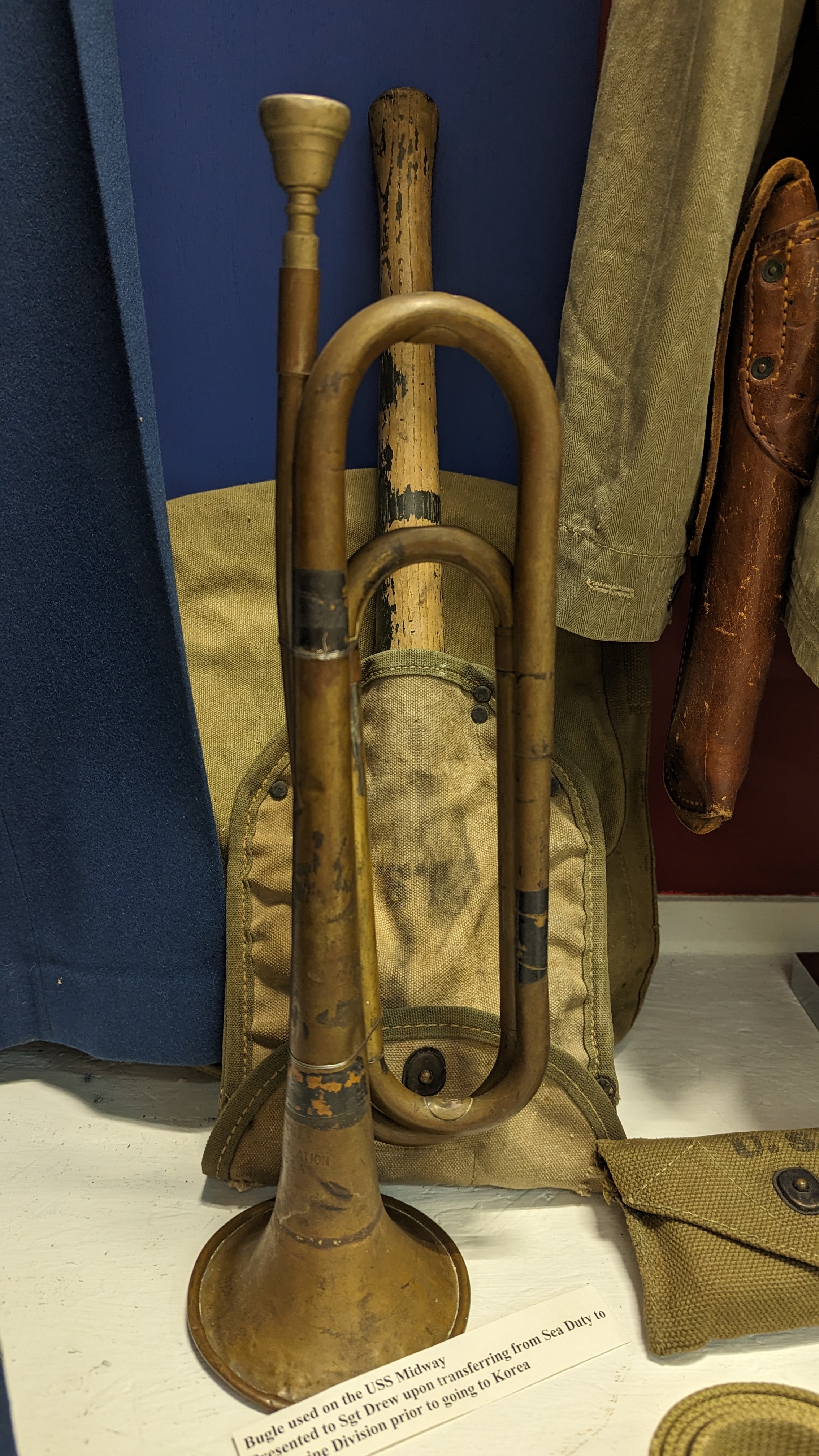
In the 1800's and 1900's bugles were used for passing commands to Marines in battle. The bugle could be heard over the chaotic sounds of the battlefield. The bugle is now used for ceremonial purposes.
Marine Corps Combat Sheath Knife



